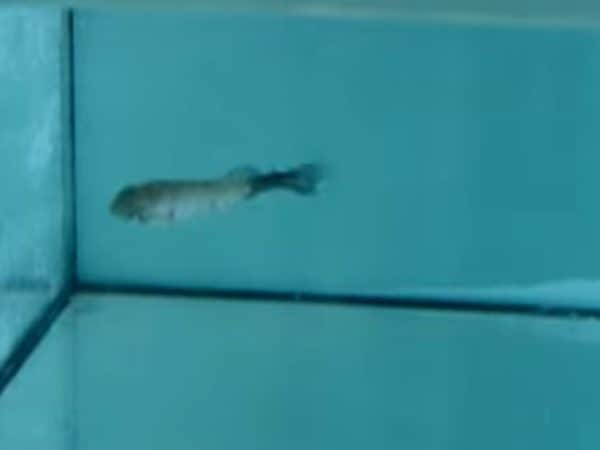
 The Canadian Food Inspection Agency (CFIA) has declared both the Bow River and Oldman River watersheds in southern Alberta to be infected with whirling disease, a disease that attacks trout, salmon and mountain whitefish and can be transmitted by infected fish as well as by boating and fishing equipment.
The Canadian Food Inspection Agency (CFIA) has declared both the Bow River and Oldman River watersheds in southern Alberta to be infected with whirling disease, a disease that attacks trout, salmon and mountain whitefish and can be transmitted by infected fish as well as by boating and fishing equipment.
Caused by the Myxobolus cerebralis parasite, whirling disease that infects the cartilage of fish skulls and spines, causing skeletal deformities such as a crooked tail or sunken head and darkened colouring on the tail. Infected fish can be seen swimming in an erratic, whirling patterns, a behaviour that keeps them from feeding and defending against predators. Whirling disease cannot be passed onto humans or other animals, yet in salmonoid fish such as rainbow and cutthroat trout, the disease has a mortality rate close to 90 per cent.
The first Canadian case of whirling disease was confirmed last August in Johnson Lake in Banff National Park. Officials with the national park closed the lake and restricted fishing, boating and swimming in over a dozen lakes, rivers and creeks in the area in attempt to contain the spread. Since then, the disease has spread through a large portion of southern Alberta, including Waterton Lakes National Park, the Bow River watershed, which was declared infected in February and now the whole of the Oldman River watershed.
“The province is continuing to stress the importance of steps to prevent the spread of whirling disease and aquatic invasive species,” reads a statement from Alberta’s Environment and Parks. “All motorized boats should have drain plugs pulled while in transportation. Bait fish should not be released.”
The CFIA recommends that people who have travelled to other countries and either visited aquaculture sites or had contact with wild fish should stay away from Canadian aquaculture sties, zoos and aquariums for 14 days.
Paul Christensen of Alberta Environment and Parks says that once it gets into a water system, the damage caused by whirling disease can be significant. “It can actually have a pretty profound impact on the fish population itself,” said Christensen last August to CBC News. “Various life stages of this parasite are pretty persistent in the environment. There’s a mix of spore stage that can last 30 years in the environment. Once it’s in a system it’s difficult, if not impossible, to get rid of it.”
Two of the fish species susceptible to whirling disease, the cutthroat trout and the bull trout, are currently listed as species at risk. The disease now joins a list of invasive species in the province, according to the Alberta Invasive Species Council, a list which also includes zebra and quagga mussels, flowering rush, hawkweed and spotted knapweed.
In March, the Alberta government announced it was providing extra funding to the tune of almost $12 million in multi-year grants for provincial watershed planning and advisory councils as well as the Alberta Water Council. The funding is aimed at helping preserve Alberta’s water resources, to deal with flood and drought issues and protect against aquatic invasive species.
Below: A trout with whirling disease…
Leave a Reply
You must be logged in to post a comment.



 Share
Share Tweet
Tweet Share
Share




Comment